History
|
The oldest rocks in the Auckland area are sediments that were deposited in the deep ocean on a basement of unknown composition and age. Here we see the original basement submerged deep under water before the deposition of any sediments. |
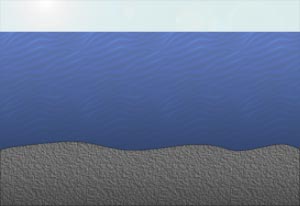
|
|
The sediments, consisting of sand and mud derived from the continental margins of Gondwana, were deposited from approximately 300 million to 150 million years ago. They were the product of erosion and volcanic activity on Gondwana. Here we see the sediments as they were originally deposited in deep water. |
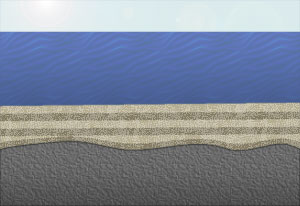
|
|
Over time the sediments were compacted, uplifted, folded and faulted, so that when we see them today they are very hard and have a broken and blocky appearance. They are referred to as greywacke and argillite, and are exposed to the east of Auckland in the Hunua Range, in some of the Hauraki Gulf islands, and at some southeastern beaches such as Omana and Maraetai. Here we see the compacted sediments being deformed due faulting in the basement. |
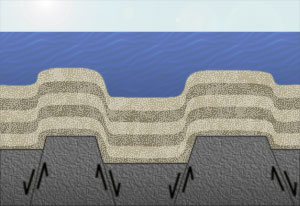
|
|
After a time gap of about 130 million years the greywacke and argillite became the basement rock when a new period of sediment accumulation began as the Auckland area was again submerged deep beneath the sea. This time the sand and mud were the product of the erosion and volcanic activity of chains of volcanoes to the east and west of the Auckland area, the remnants of which we now see as the Waitakere and Coromandel ranges. This occurred between about 23 and 5 million years ago. Here we see the sediments as they would have originally been deposited covering the new basement. |
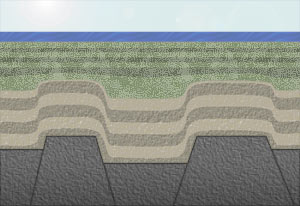
|
|
The new sediments were then compacted, uplifted, folded and faulted to form the sandstone and mudstone that directly underlie much of the Auckland area. Erosion acted on the newly uplifted rocks to create the general landscape we see around Auckland today. Collectively called the Waitemata Group, these rocks can be seen forming the layered cliffs around many coastal areas throughout Auckland. Here we see the compacted Waitemata Group rocks being deformed and uplifted. |

|
|
About 250 000 years ago the mantle beneath Auckland began to melt and form magma. Since that time, batches of magma have risen to the surface at varying intervals to produce the familiar volcanoes of the Auckland Volcanic Field. It is these volcanoes that give Auckland its unique landscape. Here we can see the magma rising along faults to the surface and erupting to form volcanoes. |
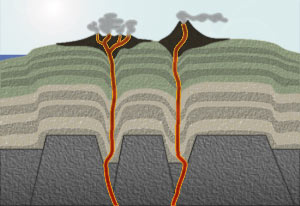
|
